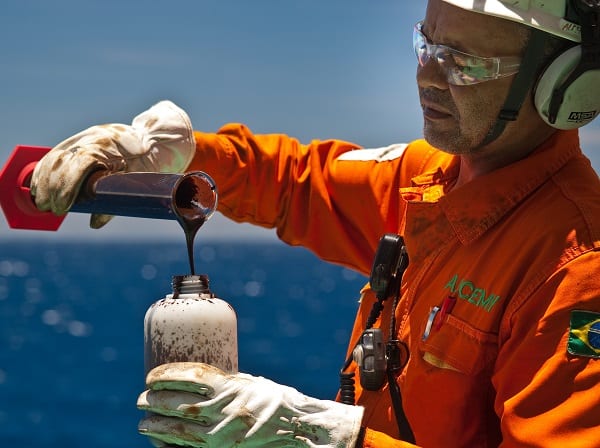(S&P Global Platts) Brazilian state-led oil company Petrobras will be reimbursed around $6.5 billion for investments it made to develop the Atapu and Sepia subsalt fields in the transfer-of-rights area in an agreement to clarify terms ahead of a production-sharing auction to sell the two fields.
The auction is expected to take place in the second half of 2021.
The agreement reached April 9 between Petrobras and government subsalt management company Pre-Sal Petroleo SA, or PPSA, should increase transparency and remove key uncertainties that led many international oil companies to sit out Brazil’s first transfer-of-rights production-sharing auction in November 2019. Brazil sold development rights to the Buzios and Itapu fields, but the Atapu and Sepia fields failed to generate offers because of high signing bonuses, high profit-oil guarantees and the complicated reimbursement process.
Mines and Energy Minister Bento Albuquerque pledged at the time that Brazil would re-evaluate terms to make the transfer-of-rights sales more attractive. Signing bonuses and profit-oil guarantees, which have not yet been released, will likely be reduced, industry officials say.
During the first transfer-of-rights auction, Atapu’s signing bonus was set at $3.4 billion and the winning bid group required to guarantee the government at least 26.23% of profit oil. Sepia’s signing bonus, meanwhile, was set at $5.6 billion for the 2019 auction, which was the sale’s second highest, and the minimum profit-oil guarantee was fixed at 27.88%.
The agreement between Petrobras and PPSA will add clarity ahead of the next transfer-of-rights auction and boost competition. During the first transfer-of-rights auction, companies were required to make offers and then negotiate reimbursements to Petrobras after submitting the winning bid.
Under terms of the latest agreement, Petrobras will receive $3.253 billion and own a 39.5% operating stake in the Atapu Field, which pumped first oil in June 2020. That means that Brazil will offer a 60.5% minority share in the field at the production-sharing auction. Petrobras will also get $3.2 billion and own a 31.3% operating stake in the Sepia Field, which is expected to pump first oil in mid-year. A 68.7% minority stake in Sepia will be sold at the auction.
The winning bidders, for example, will reimburse Petrobras for the investments made at each field and then can deduct the payments from profit-oil calculations, Petrobras and PPSA said. Petrobras and the winning consortium will also have to sign a co-participation agreement for the field.
Market conditions for the next transfer-of-rights sale should also be improved, with international oil prices solidly above $60/b as global coronavirus vaccine efforts expand and demand destroyed by the brutal pandemic rebounds. The transfer-of-rights auction represents a rare opportunity to buy a slice of fresh, low-sulfur light oil production from Brazil’s massive subsalt frontier, where a single well can produce as much as 60,000 b/d of oil equivalent.
Production underway
Atapu and Sepia were discovered in the transfer-of-rights areas, where Petrobras was granted the rights to pump 5 billion barrels of crude in a 2010 oil-for-shares swap with the government. Petrobras, however, discovered almost three times as much oil as expected, so the government decided to sell the excess oil volumes under production-sharing contracts.
The transfer-of-rights areas, however, differ from previous sales because extensive development work was done on the deposits, many of which are already in production or will pump first oil soon.
The Atapu field is already in production, pumping about 69,000 b/d of oil equivalent via the FPSO P-70 floating production, storage and offloading vessel that entered operations in June 2020. The FPSO has installed capacity to produce 150,000 b/d and process 6 million cu m/d. The FPSO P-70, which was installed in waters 2,300 meters deep about 200 kilometers off the coast of Rio de Janeiro state, will be connected to eight production and eight injection wells.
Petrobras estimated that Atapu held about 550 million recoverable barrels of oil equivalent when the field was declared commercially viable for development in December 2014. The ANP, however, estimated that the field could hold 2.5 billion-4 billion boe.
The FPSO Carioca, meanwhile, arrived in Brazil in February, where it’s expected to complete the installation of processing modules before being installed at the Sepia Field about mid-year, according to Petrobras. The FPSO has installed capacity to pump 180,000 b/d and process 12 million cu m/d.
Sepia was estimated to hold 500 million barrels of recoverable reserves when Petrobras declared it commercially viable for development in September 2014. The ANP estimated the field could hold 500 million-700 million barrels of recoverable reserves.



